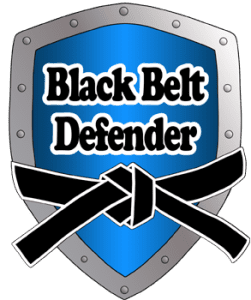
free shipping on orders over $49
We're having a 15% off sale on all our products. Enter your email below to be notified about future sales.




As crime rates soar, you’re probably noticing more people opting for pepper spray as a quick self-defense tool. In cities like NYC, where serious crimes have spiked by over 35%, it’s no surprise you’re contemplating this portable safety measure. It’s not just about feeling secure; it’s a necessary response to the troubling rise in urban crime. Sales of compact models, especially those that can attach easily to keychains, are flying off the shelves as your fellow city dwellers gear up to protect themselves. Curious about which type might work best for you? There’s plenty to ponder.
Crime rates have surged dramatically, leading to an increased demand for pepper spray as more people seek ways to protect themselves. You’ve likely heard through Fox Business News about the steep climb in criminal activities, especially in places like NYC. This isn’t just numbers; it’s a reality affecting daily lives, injecting fear among residents and pushing them towards self-defense products.
In NYC alone, there’s been a 35.6% increase in serious crimes. Imagine walking down your street, the same one you’ve walked for years, but now with a pepper spray in hand, just in case. That’s the new normal for many. The fear isn’t unfounded—it’s built on hard statistics and nightly news stories that seem to echo the same worrisome trend.
As a resident in these turbulent times, your personal safety has likely never felt more threatened. Pepper spray, a relatively accessible and legal self-defense tool, has become a go-to for many. It’s not just about having it; it’s about feeling a tad more secure in an unpredictable world. This uptick isn’t just a statistic; it’s a direct response to the palpable fear stirred by rising crime rates.
As you’ve noticed, rising urban crime rates are pushing more people towards pepper spray as a preferred self-defense tool.
You’ll see that trends aren’t only influencing product availability but also shaping legal regulations surrounding its use.
Let’s explore how these factors interact and what they mean for you as a consumer.
In response to escalating crime in urban areas, residents are increasingly purchasing pepper spray for protection. You’re noticing how pepper spray sales are surging, driven by growing concerns about personal safety.
Here’s why you might consider this trend:
This trend reflects a broader move toward taking personal security into your own hands, a reflection of the deepening worry about safety in city environments.
Building on the need for personal security, pepper spray has emerged as a preferred choice among self-defense tools. As you navigate through urban areas where crime rates are climbing, you’re likely considering options for personal protection.
Pepper spray fits the bill perfectly. It’s not just about feeling safe; the sales trends confirm its popularity. With rising crime rates, the demand for this effective self-defense tool has soared. You’ll find more people like yourself opting for pepper spray, making it a must-have accessory.
This spike in demand reflects deepening safety concerns, prompting a surge in sales of both compact and keychain varieties. It’s clear that amidst uncertainties, pepper spray remains a top choice for personal safety.
You’ll need to understand the legal regulations surrounding pepper spray, as these rules play an essential role in its widespread adoption for personal protection. Here’s what you should know:
Pepper sprays, including fogger, stream, and gel types, cater to various self-defense needs and preferences. When you’re considering which type to carry, it’s important to understand how each formulation aligns with your personal safety strategy.
Fogger sprays are ideal if you’re looking for broader coverage; they disperse the Oleoresin Capsicum (OC) formula in a mist, creating a barrier that can incapacitate multiple threats at once. This type is particularly useful in situations where precision is less important than immediate area coverage.
On the other hand, stream pepper sprays provide a direct, targeted stream of OC, allowing you to focus on a specific threat from a distance. This type reduces the risk of wind blowback, making it a safer choice in outdoor environments. It’s perfect if you need precision and control over where the spray lands.
Lastly, gel pepper sprays emit a thick, sticky substance that adheres to an assailant’s face, minimizing the chance of contaminating the surrounding area. This type is excellent for indoor use or in windy conditions, as it sticks to the target while reducing the risk of affecting bystanders.
Each option offers distinct advantages, depending on your environment and self-defense preferences.
As you consider purchasing pepper spray, it’s important to understand the ownership regulations that vary by location.
You’ll need to comply with usage laws, which dictate how and where you can carry and deploy pepper spray.
Knowing these rules can help you avoid legal issues while ensuring your safety.
Prior to purchasing or carrying pepper spray for self-defense, it’s important to familiarize yourself with the local laws and ownership regulations. Here are key points to remember:
Understanding these regulations helps you stay in legal compliance while protecting yourself.
You must understand and adhere to local usage compliance laws when carrying pepper spray for self-defense. Compliance varies by location, and it’s essential to know the specifics.
You’re required to be of legal age in many places before you can legally purchase or carry pepper spray. Some areas might also demand that you complete training or obtain permits.
Be aware of the restrictions about where and how you can use pepper spray—ignorance isn’t an excuse. If you don’t follow these pepper spray laws, you could face serious consequences, including fines or other penalties.
Always stay informed and make sure you’re fully compliant to avoid any legal complications.
When selecting pepper spray, it’s important to evaluate its strength, range, and ease of use to make sure it aligns with your personal safety requirements. Given the escalating crime rates, many are turning to this powerful tool. Retail sales are booming, especially at places like Esco Pharmacy in Hells Kitchen, where the demand for self-defense products is particularly high. Both men and women are incorporating pepper sprays into their safety strategies.
Here’s what you should look for when choosing the right pepper spray:
As the market trends show, safety is a growing concern, particularly among women in NYC. By choosing the right pepper spray, you’re taking an important step towards enhancing your security in these uncertain times.
Keep your pepper spray in an easily accessible spot, such as a pocket or purse, so you can quickly grab it during an emergency. It’s essential for your personal safety that you’re prepared and can react swiftly when threatened.
To effectively use pepper spray as a self-defense tool, make sure you’ve undergone proper training. Training helps you understand how to aim and deploy the spray accurately, reducing the risk of harming yourself or bystanders. It’s not just about spraying; it’s about making sure you’re doing it right under pressure.
Always check the expiration date on your pepper spray canister. An expired canister may not work as expected, or worse, it could fail to work at all when you need it most. User safety tips often overlook this detail, but it’s crucial for ensuring the reliability of your self-defense tool.
Lastly, familiarize yourself with the local regulations concerning pepper spray. This knowledge is critical as law enforcement policies vary by location. Knowing the legal framework helps you avoid any legal issues while carrying and using pepper spray within your rights. Integrating these practices into your personal safety strategy enhances your preparedness and confidence in handling potential threats.
Pepper spray’s proven effectiveness in deterring attackers makes it a top choice for non-lethal self-defense. As you look into security equipment options, consider the strong endorsements pepper spray receives from law enforcement agencies and security professionals. The active ingredient, oleoresin capsicum (OC), is key to its success, disrupting the vision and breathing of an assailant and giving you a chance to escape.
Market research shows a significant rise in the sales of self-defense products, with pepper spray leading due to its reliability and ease of use. Here’s why pepper spray stands out in the personal safety market:
These features not only contribute to its high product effectiveness but also enhance your personal safety in tense situations. As crime rates climb, staying equipped with reliable defense tools like pepper spray is more vital than ever.
As crime rates soar globally, the demand for pepper spray is witnessing significant regional variations. In North America, you’re seeing the largest impact, with this region dominating the global market. It held a 32% market share in 2022, and its growth isn’t slowing down. Sales are estimated to increase at a CAGR of 12.5% over the next decade.
In Europe, the urgency for personal safety devices like pepper spray is also climbing sharply. The projected rise in sales at a CAGR of 14% through 2033 indicates a rapidly growing regional demand. This uptrend suggests that you’ll see more Europeans equipping themselves against potential threats.
Moving over to Latin America, the figures are equally telling. With a 15% stake in the global market as of 2022, it’s clear that the demand there’s robust. Meanwhile, in the Asia Pacific region, which holds a 19% market share, you’re likely observing a similar surge in interest. This region’s significant share points to a considerable number of individuals turning to pepper spray as a preferred method of self-defense.
Each region’s increasing reliance on pepper spray underscores a common global sentiment: the need for personal safety is more pressing than ever.
Looking ahead, the pepper spray market is set to expand from $32 million in 2023 to $71 million by 2032, growing at a robust CAGR of 9.3%. This surge is largely driven by the escalating demand for self-defense products amid rising concerns over personal safety.
As you navigate this evolving landscape, here’s what you’ll see driving the market growth:
As the global pepper spray market expands, staying informed about these developments will help you make better choices for your safety. Remember, the right self-defense product can make a significant difference in your personal security.
Pepper spray’s success rate exceeds 90%, influenced by spray formulation, application techniques, environmental factors, and legal implications. Training and understanding psychological effects are essential. Always consider alternative defenses and potential medical responses.
You might find that 15-35% of people aren’t affected by pepper spray due to chemical resistance, personal tolerance, or genetic immunity. Consider spray alternatives and training effectiveness, especially considering environmental factors and medical implications.
You might wonder why police don’t use pepper spray. It’s often due to safety concerns, public perception, legal implications, and strict police training protocols. They also consider alternative methods and equipment cost.
As always, be safe and be prepared.
See Also:
Black Belt Defender
1867 Caravan Trail #105
Jacksonville, FL 32216-2006
Call us toll-free: (800) 859-5566
Mon-Fri: 9:00 am – 5:00 pm EST
NH based, FL Warehouse
Online Orders: 24/7/365

